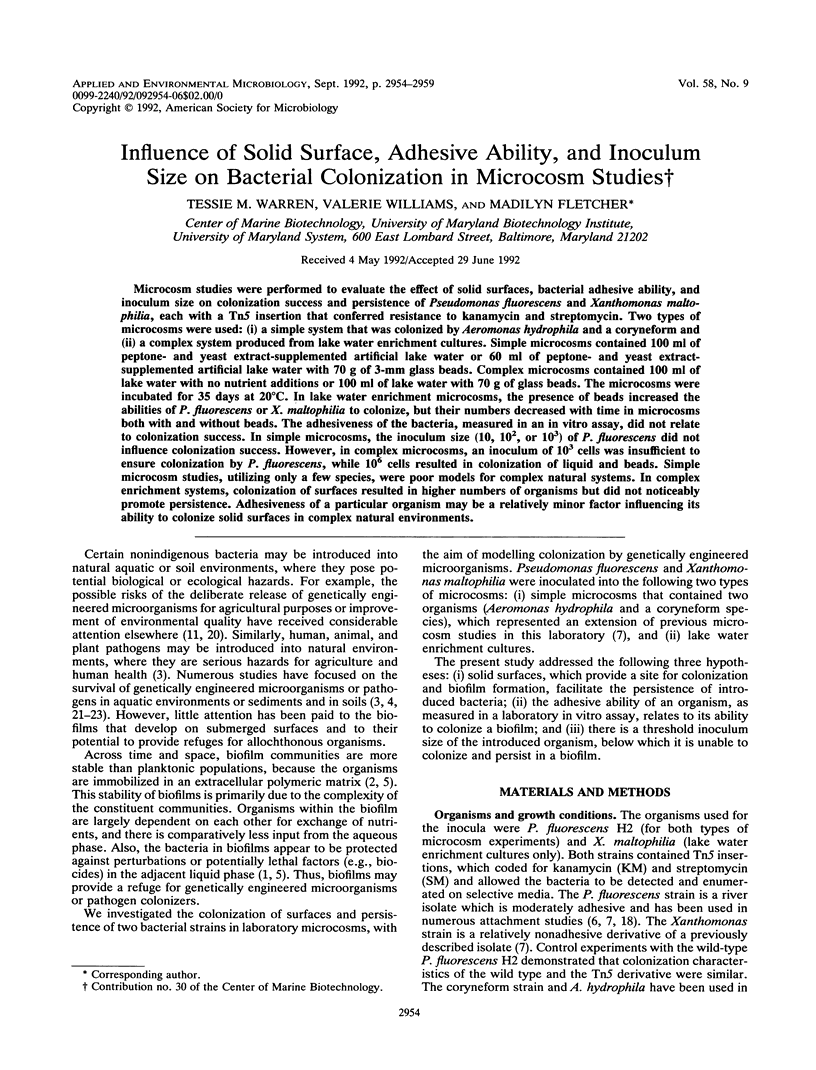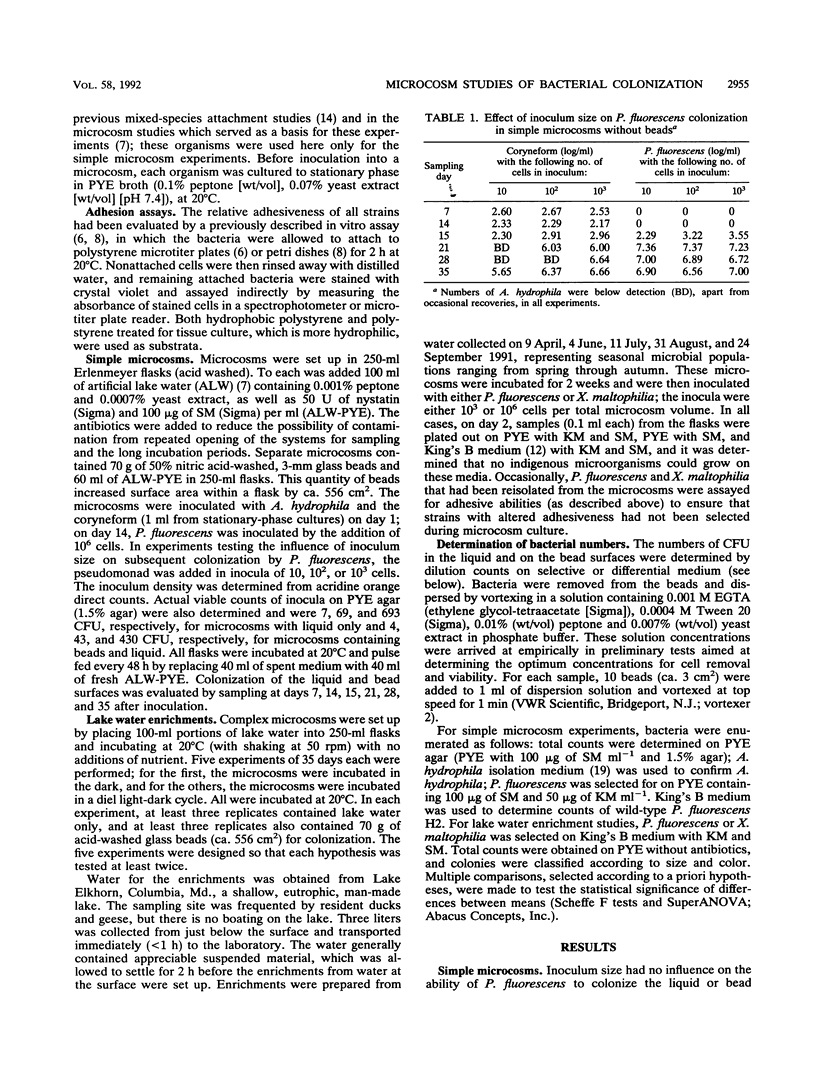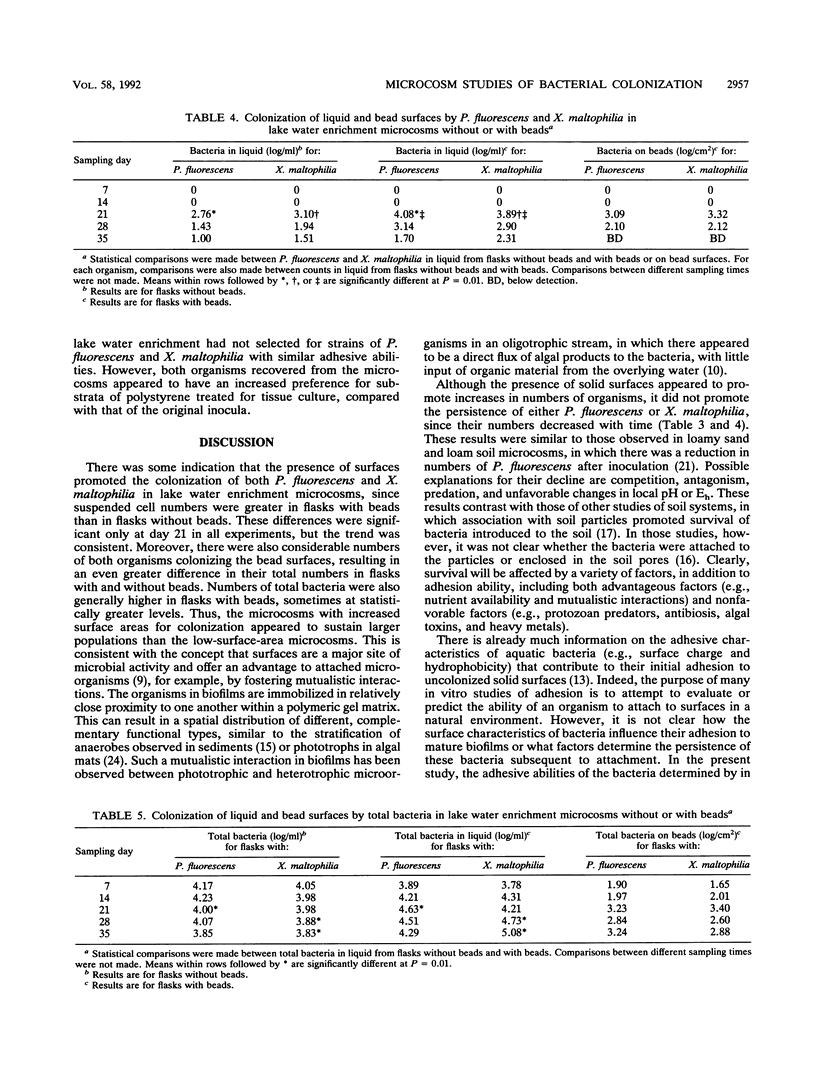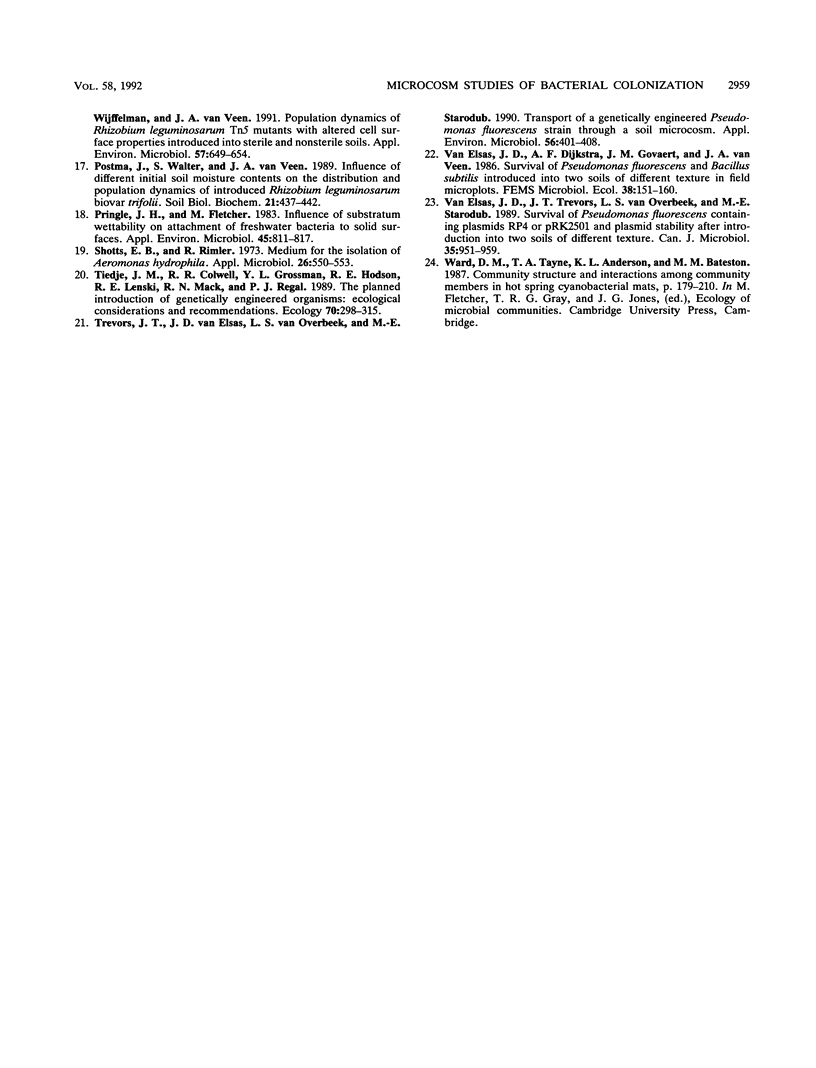Abstract
Microcosm studies were performed to evaluate the effect of solid surfaces, bacterial adhesive ability, and inoculum size on colonization success and persistence of Pseudomonas fluorescens and Xanthomonas maltophilia, each with a Tn5 insertion that conferred resistance to kanamycin and streptomycin. Two types of microcosms were used: (i) a simple system that was colonized by Aeromonas hydrophila and a coryneform and (ii) a complex system produced from lake water enrichment cultures. Simple microcosms contained 100 ml of peptone- and yeast extract-supplemented artificial lake water or 60 ml of peptone- and yeast extract-supplemented artificial lake water with 70 g of 3-mm glass beads. Complex microcosms contained 100 ml of lake water with no nutrient additions or 100 ml of lake water with 70 g of glass beads. The microcosms were incubated for 35 days at 20°C. In lake water enrichment microcosms, the presence of beads increased the abilities of P. fluorescens or X. maltophilia to colonize, but their numbers decreased with time in microcosms both with and without beads. The adhesiveness of the bacteria, measured in an in vitro assay, did not relate to colonization success. In simple microcosms, the inoculum size (10, 102, or 103) of P. fluorescens did not influence colonization success. However, in complex microcosms, an inoculum of 103 cells was insufficient to ensure colonization by P. fluorescens, while 106 cells resulted in colonization of liquid and beads. Simple microcosm studies, utilizing only a few species, were poor models for complex natural systems. In complex enrichment systems, colonization of surfaces resulted in higher numbers of organisms but did not noticeably promote persistence. Adhesiveness of a particular organism may be a relatively minor factor influencing its ability to colonize solid surfaces in complex natural environments.
Full text
PDF





Selected References
These references are in PubMed. This may not be the complete list of references from this article.
- Brown M. R., Allison D. G., Gilbert P. Resistance of bacterial biofilms to antibiotics: a growth-rate related effect? J Antimicrob Chemother. 1988 Dec;22(6):777–780. doi: 10.1093/jac/22.6.777. [DOI] [PubMed] [Google Scholar]
- Chao L., Ramsdell G. The effects of wall populations on coexistence of bacteria in the liquid phase of chemostat cultures. J Gen Microbiol. 1985 May;131(5):1229–1236. doi: 10.1099/00221287-131-5-1229. [DOI] [PubMed] [Google Scholar]
- Compeau G., Al-Achi B. J., Platsouka E., Levy S. B. Survival of rifampin-resistant mutants of Pseudomonas fluorescens and Pseudomonas putida in soil systems. Appl Environ Microbiol. 1988 Oct;54(10):2432–2438. doi: 10.1128/aem.54.10.2432-2438.1988. [DOI] [PMC free article] [PubMed] [Google Scholar]
- Fletcher M. The effects of proteins on bacterial attachment to polystyrene. J Gen Microbiol. 1976 Jun;94(2):400–404. doi: 10.1099/00221287-94-2-400. [DOI] [PubMed] [Google Scholar]
- Fletcher M. The physiological activity of bacteria attached to solid surfaces. Adv Microb Physiol. 1991;32:53–85. doi: 10.1016/s0065-2911(08)60005-3. [DOI] [PubMed] [Google Scholar]
- KING E. O., WARD M. K., RANEY D. E. Two simple media for the demonstration of pyocyanin and fluorescin. J Lab Clin Med. 1954 Aug;44(2):301–307. [PubMed] [Google Scholar]
- McEldowney S., Fletcher M. Adhesion of bacteria from mixed cell suspension to solid surfaces. Arch Microbiol. 1987 Jun;148(1):57–62. doi: 10.1007/BF00429648. [DOI] [PubMed] [Google Scholar]
- Postma J., Hok-A-Hin C. H., Schotman J. M., Wijffelman C. A., van Veen J. A. Population Dynamics of Rhizobium leguminosarum Tn5 Mutants with Altered Cell Surface Properties Introduced into Sterile and Nonsterile Soils. Appl Environ Microbiol. 1991 Mar;57(3):649–654. doi: 10.1128/aem.57.3.649-654.1991. [DOI] [PMC free article] [PubMed] [Google Scholar]
- Pringle J. H., Fletcher M. Influence of substratum wettability on attachment of freshwater bacteria to solid surfaces. Appl Environ Microbiol. 1983 Mar;45(3):811–817. doi: 10.1128/aem.45.3.811-817.1983. [DOI] [PMC free article] [PubMed] [Google Scholar]
- Shotts E. B., Jr, Rimler R. Medium for the isolation of Aeromonas hydrophila. Appl Microbiol. 1973 Oct;26(4):550–553. doi: 10.1128/am.26.4.550-553.1973. [DOI] [PMC free article] [PubMed] [Google Scholar]
- Trevors J. T., van Elsas J. D., van Overbeek L. S., Starodub M. E. Transport of a genetically engineered Pseudomonas fluorescens strain through a soil microcosm. Appl Environ Microbiol. 1990 Feb;56(2):401–408. doi: 10.1128/aem.56.2.401-408.1990. [DOI] [PMC free article] [PubMed] [Google Scholar]


